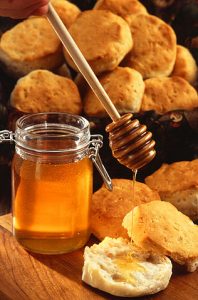It’s Time to Start Thinking about the Wild Bees Again
By Sy Maher
It’s time to start thinking about wild bees again. Since the 1950’s native bees have been severely reduced because of industrial farming and the use of pesticides. Neonicotinoids are the culprit and are used in agriculture, nurseries plants, landscaping and kill every type of insect coming into contact with it. Neonicotinoids are absorbed through plant stems and are delivered through the plant flower where nectar and pollen are stored. That’s how it gets the bees.
According to the University of Minnesota Extension, we should “Supply our gardens to include many species of flowers that bloom from May to September to provide pollen and nectar to bees and beneficial insects AND avoid treating flowering plants that bees utilize, with any insecticides, especially systemic, neonicotinoids.
In Arizona, the warmer winters can support flowers and bees year round.
Today I would like to mention once more the importance of our native bees.
Solitary bees vary in size, do not have a queen, produce wax, or live in colonies. Solitary bees are the most efficient and effective pollinators around but do not share the notoriety of the honey bees. Here in the US, there are 4000 species of native bees. Virtually all of our native bees live on their own.
Unlike honey bee hives, solitary bees share a sort of neighborhood. For instance, the Mason bee likes to give the appearance of being hive-like by sharing the same receptacle but maintaining their own cell. Mason bees are named for the masonry-like materials they use. Some burrow out small holes in wood already weakened by wood-boring insects, while others like to use cracks in brick walls. Almost any dark pre-made residence will do, even an abandoned rodents den.
Like any Mason bee, the Blue Orchard bee will lay eggs on a stockpile of pollen and then mud the little partition up and start the process again. Orchard Bees are not aggressive. Not even when someone gets close to the nest. Yes, the female can sting, she doesn’t want to. One would have to grab the bee, step on it, or maybe get it trapped in one’s clothing to agitate her enough to sting. If she does sting, although rare, their stringer is much shorter and less painful than the honey bee.
Carpenter bees are wild and therefore crucial for pollinating native plants, contributing a food source for birds and other wildlife. They are mostly seen as pests, but if you put out a soft chunk of wood or a log in your yard, they will prefer it over your home (not too close because it may attract termites).Carpenter bees typically don’t like painted surfaces. Their skills as pollinators are much more relevant to our ecosystem than killing them. Carpenter bees are just looking for a place to live, and although they are solitary in nature, the may live alongside together as sisters, mothers, and daughters. They merely give the illusion of being hive-like. There is no hive or colony, just neighborly existence.
Bumble bees seemed to have earned their name aimlessly bumbling around in the garden, but bumblebees are super-fast and super-efficient pollinators! They prefer to forage for pollen that’s rich in protein rather than nectar, and can even detect which pollen is more nutritious. These big fuzzy bees are belly floppers picking up and distributing more pollen per load than the slender honey bee. I like to think of them as flying teddy bears.
Native bees can pollinate three times more than a honey bee, but they need our support too.
Below under Resources, please find ways to plant, house, water, and support these pollinators.
We at Luckey Bee Farm Thank You for your continued interest in our native bees.
Sources
https://www.care2.com/greenliving/help-the-bees-with-this-diy-bee-water-garden.html
Resources
https://extension.arizona.edu/bee-resources
https://cals.arizona.edu/yavapai/anr/hort/byg/index.html
http://www.xerces.org/wp-content/uploads/2008/11/nests_for_native_bees_fact_sheet_xerces_society.pdf
http://www.foxleas.com/make-a-bee-hotel.asp
http://www.pollinator.org/PDFs/AmericanSemiDesert.rx8.pdf
https://luckeybee.com/index.php/2017/07/20/bee-gardens-can-help-save-bees-greater-mesaphoenix-area/
https://www.care2.com/greenliving/help-the-bees-with-this-diy-bee-water-garden.html



Good article. People sure do need to be educated about bees.